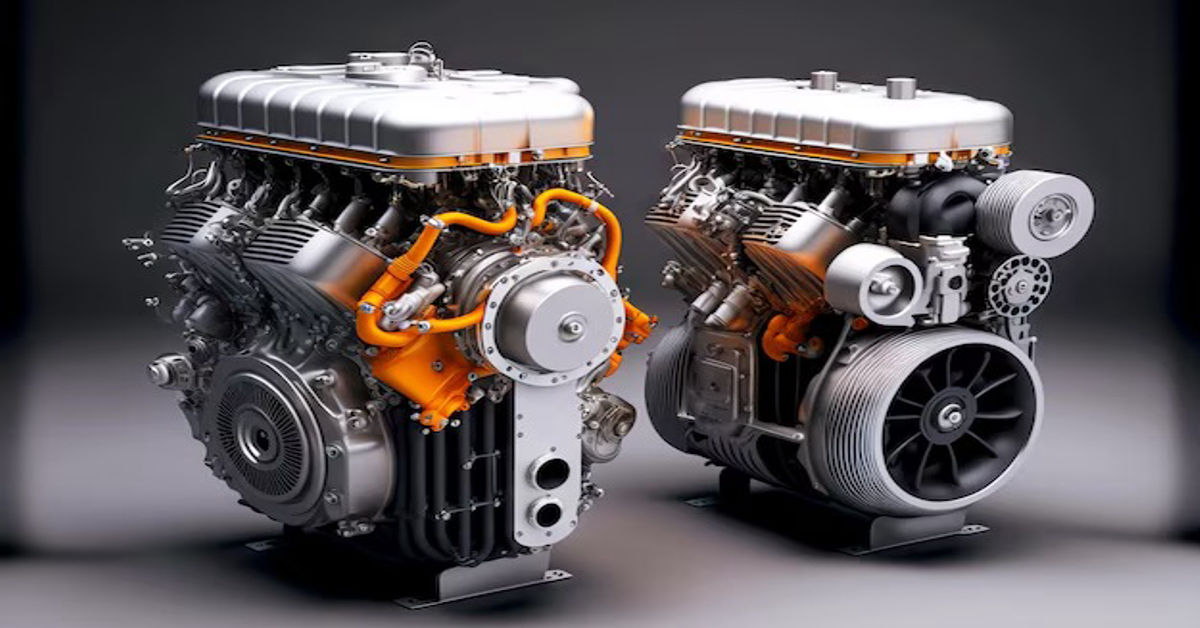When it comes to choosing between Ford’s powerhouse engines—the 5.0 and the 6.0—the decision isn’t just about horsepower; it’s about lifestyle, performance needs, and long-term value. Ford’s 5.0-liter V8, often referred to as the “Coyote” engine, is celebrated for its balance of raw muscle and modern efficiency. It’s a favorite among those who crave a classic V8 rumble with refined engineering, perfect for everyday driving, light towing, or performance builds. On the other hand, the 6.0-liter—especially when referring to the Power Stroke diesel—caters to a different beast entirely: heavy-duty haulers, contractors, and those tackling serious loads who need brute strength and torque that doesn’t flinch under pressure.
This article dives under the hood to compare these two engine titans, breaking down their core features, maintenance demands, real-world applications, and long-term reliability. Whether you’re a weekend warrior looking to upgrade your ride or a professional who counts on your truck day in and day out, understanding what each engine brings to the table is key to making a smart investment. Let’s unravel the power, the pros, and the purpose behind the 5.0 vs. 6.0 debate—because in Ford’s world, performance is never one-size-fits-all.
Overview of Ford Engines
Ford’s legacy of innovation shines brightly through its powerhouse engines, and the 5.0 and 6.0 are two standout examples that represent different philosophies of performance. The 5.0L V8—fondly known as the “Coyote”—is a marvel of modern engineering, blending classic V8 power with cutting-edge fuel efficiency and smooth delivery. It’s tailored for drivers who want strong acceleration, responsive handling, and the confidence of a naturally aspirated engine under the hood. Whether it’s cruising the highway or towing a trailer on the weekend, the 5.0 delivers a balanced performance that appeals to both enthusiasts and everyday truck owners.
In contrast, the 6.0L engine, often referencing the Power Stroke diesel, is built for heavy-duty demands. Designed with high torque output and robust internals, it’s the workhorse of Ford’s lineup—perfect for hauling, towing, and industrial applications where brute strength is non-negotiable. Though it has faced some criticism in the past, many loyalists stand by its raw capability when properly maintained. Each engine reflects Ford’s deep understanding of its audience: the 5.0 for spirited versatility, and the 6.0 for relentless utility. Knowing which one suits your needs isn’t just about specs—it’s about how you drive, what you demand from your vehicle, and how far you’re ready to go.
The Evolution of Ford Truck Engines
Ford’s legacy of engineering excellence is built on constant innovation, and nowhere is this more evident than in the evolution of its engines. From raw, utilitarian workhorses to smart, refined powertrains, Ford has consistently pushed the boundaries of what its engines can do. The 5.0L and 6.0L engines are prime examples of this journey—two milestones on a timeline of progress. The 5.0L “Coyote” represents Ford’s mastery of modern V8 technology, boasting high-revving performance, impressive horsepower, and optimized fuel efficiency. It’s an engine crafted for the modern driver who wants power without sacrificing finesse or reliability.
Meanwhile, the 6.0L Power Stroke diesel reflects Ford’s commitment to raw, industrial-grade muscle. This engine was built for serious towing and hauling, packing heavy torque and diesel efficiency into a design meant for hard labor. Though the 6.0 faced technical scrutiny during its earlier years, it marked an important step in Ford’s diesel evolution—highlighting the brand’s willingness to take risks and learn. Together, these engines not only showcase the diversity in Ford’s lineup but also tell a story of how performance, innovation, and consumer needs have shaped one of the most influential automakers in the world.
What is the 5.0 Ford Engine?
The 5.0 engine, often referred to as the “Coyote,” is a naturally aspirated V8. It became widely known for its smooth power delivery and responsiveness. Originally launched in Ford’s performance cars, it transitioned into trucks due to its high-revving nature and reliability.
Key Features of the 5.0 Engine
- Displacement: 5.0 liters
- V8 architecture
- Dual overhead camshaft (DOHC)
- High-revving capability
- Direct and port fuel injection
What is the 6.0 Ford Engine?
The 6.0 engine is a Power Stroke diesel introduced for heavy-duty applications. It gained popularity in the early 2000s and was used primarily in Super Duty trucks. Known for its torque and towing prowess, it became a favorite for commercial and hauling purposes.
Key Features of the 6.0 Engine
- Displacement: 6.0 liters
- V8 diesel engine
- Turbocharged
- Direct fuel injection
- Strong low-end torque
Performance Comparison
When it comes to raw performance, both engines offer distinct benefits. The 5.0 delivers high horsepower and a smooth driving experience, while the 6.0 excels in torque and heavy-load performance.
| Specification | 5.0 Engine | 6.0 Engine |
| Type | Gasoline V8 | Diesel V8 |
| Horsepower | Approx. 400 hp | Approx. 325 hp |
| Torque | Approx. 410 lb-ft | Approx. 560 lb-ft |
| Turbo | No | Yes |
Towing and Hauling Capabilities
Trucks equipped with the 6.0 engine generally outperform the 5.0 in towing due to diesel torque characteristics. The 6.0 is better suited for heavy-duty applications like trailers and construction loads.
| Towing Capacity | 5.0 Engine | 6.0 Engine |
| Max Towing | Up to 11,000 lbs | Up to 15,000 lbs |
| Payload Capacity | Up to 3,000 lbs | Up to 4,500 lbs |
Fuel Efficiency Differences
Fuel economy is a major consideration. While diesel engines like the 6.0 are efficient under load, the 5.0 offers better mileage in daily driving conditions.
| Driving Scenario | 5.0 Engine | 6.0 Engine |
| City MPG | Approx. 17 mpg | Approx. 12 mpg |
| Highway MPG | Approx. 23 mpg | Approx. 17 mpg |
| Combined | Approx. 19 mpg | Approx. 14 mpg |
Maintenance and Reliability
Each engine has unique maintenance needs. The 5.0 is known for lower maintenance costs and ease of access. The 6.0, although powerful, requires regular upkeep to avoid costly issues.
| Maintenance Factor | 5.0 Engine | 6.0 Engine |
| Oil Change Cost | Lower | Higher |
| Common Issues | Timing chains | EGR and Turbo |
| Repair Complexity | Moderate | High |
Engine Longevity
Longevity depends on maintenance and usage. The 6.0, when maintained properly, can reach high mileage but is more sensitive to neglect. The 5.0 tends to last long with basic maintenance.
| Longevity Expectation | 5.0 Engine | 6.0 Engine |
| Avg. Lifespan | 200,000+ miles | 250,000+ miles |
| Critical Maintenance | Moderate | High |
Ideal Use Cases for 5.0
The 5.0 engine is ideal for users seeking a blend of power and efficiency. It is best suited for:
- Light towing
- Daily commuting
- Recreational use
- Occasional hauling
Ideal Use Cases for 6.0
The 6.0 shines in demanding environments. Ideal scenarios include:
- Heavy-duty towing
- Construction work
- Commercial fleet use
- Long-haul transport
Cost of Ownership
Overall ownership costs differ significantly. The 5.0 tends to be more budget-friendly in the long run, while the 6.0 can incur high costs due to maintenance and fuel.
| Cost Factor | 5.0 Engine | 6.0 Engine |
| Purchase Price | Lower | Higher |
| Fuel Cost | Lower | Higher |
| Insurance | Moderate | High |
Availability of Parts and Upgrades
Parts for both engines are widely available, but the 5.0 has a larger aftermarket due to its popularity in both trucks and performance vehicles.
| Component Category | 5.0 Engine | 6.0 Engine |
| Aftermarket Parts | Extensive | Moderate |
| OEM Parts | Readily Available | Readily Available |
| Performance Upgrades | Abundant | Available |
Expert Opinions and Owner Reviews
Automotive experts often praise the 5.0 for its balance and low maintenance needs. The 6.0, while powerful, has a mixed reputation due to its complex systems and higher upkeep.
Common Sentiments:
- 5.0: Reliable, efficient, easy to maintain
- 6.0: Strong but requires careful attention
Final Thoughts and Recommendations
Choosing between the 5.0 and 6.0 depends on your specific needs. If you’re looking for a daily driver with occasional towing, the 5.0 is a solid option. If you need maximum towing power and use your truck for work, the 6.0 is built for the job. Always consider maintenance and cost over time to make the right decision.
Frequently Asked Questions
What is the better engine for daily driving?
The 5.0 engine is more suitable for daily use due to its better fuel economy and lower maintenance.
Which engine lasts longer?
Both can last a long time with care, but the 6.0 requires more diligent maintenance.
Is the 6.0 Power Stroke reliable?
It can be reliable if maintained properly, but it is known for issues if neglected.
Can the 5.0 engine tow a trailer?
Yes, it can tow moderate loads up to 11,000 pounds.
Are parts more expensive for the 6.0 engine?
Yes, parts and repairs for the 6.0 are generally more expensive.







